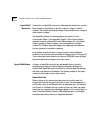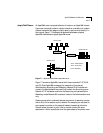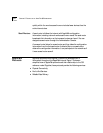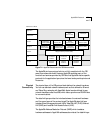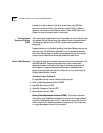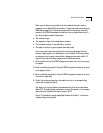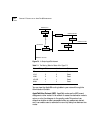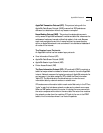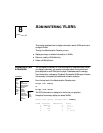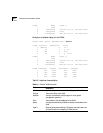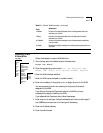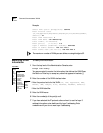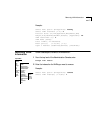
7-10 CHAPTER 7: ROUTING IN AN APPLETALK® ENVIRONMENT
AppleTalk Data Stream Protocol (ADSP). The ADSP works with the ATP to
ensure reliable data transmission. Unlike ATP, however, ADSP provides
full-duplex byte-stream delivery. This means that two nodes can
communicate simultaneously. ASDP also includes flow control, so that a
fast sender does not overwhelm a slow receiver.
AppleTalk Session Protocol (ASP). The ASP passes commands between a
workstation and a server once a connection is made between the two. ASP
ensures that the commands are delivered in the same order as they were
sent and returns the results of these commands to the workstation.
Printer Access Protocol (PAP). The PAP maintains communications
between a workstation and a printer or print service. The PAP functions
include setting up and maintaining a connection, transferring the data, and
tearing down the connection on completion of the job. Like other protocols
at the session layer, PAP relies on NBP to find the addresses of named
entities. PAP also depends on ATP for sending data.
Presentation Layer The presentation layer maintains information about files, formats, and
translations between formats. An AppleTalk internet has two protocols at
the presentation layer: the AppleTalk Filing Protocol (AFP) and PostScript®.
AFP provides remote access to files on the network. PostScript is a paged
description language used by many printers.
About AARP The AppleTalk Address Resolution Protocol (AARP) maps the hardware
address of an AppleTalk node to an AppleTalk protocol address. It does this
mapping for both extended and nonextended networks.
When a node on the network initializes, it randomly selects an AppleTalk
address for itself. At the same time, it sends out ten AARP probe packets.
The probe packets determine whether any other nodes on the network are
using the address it has chosen. If a node on the network is already using
that address, the node randomly selects another address and sends out
another probe packet.



